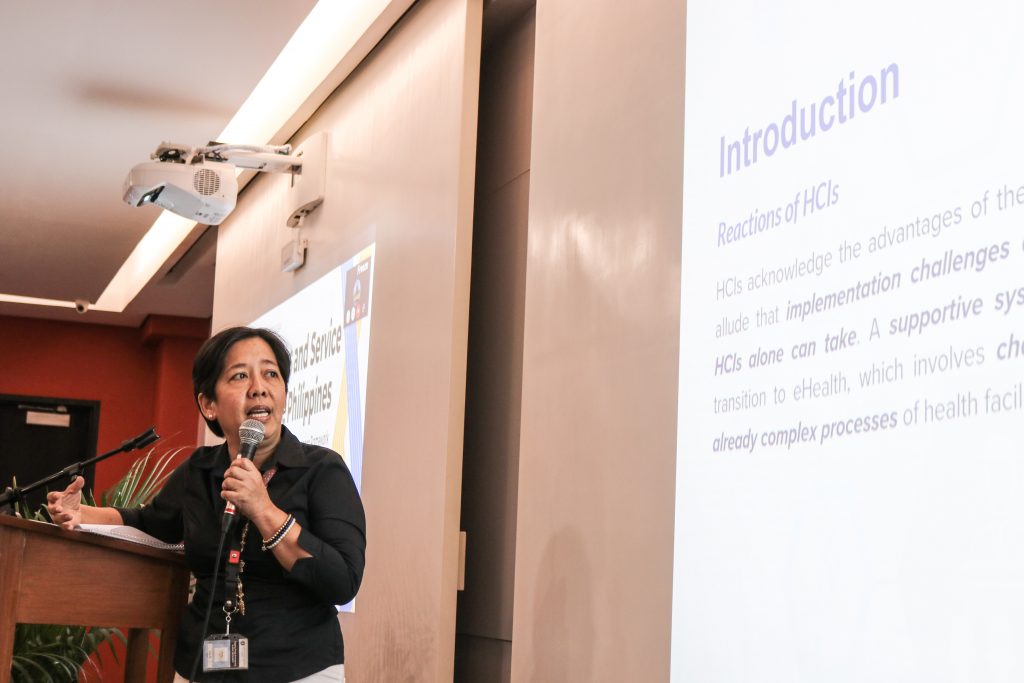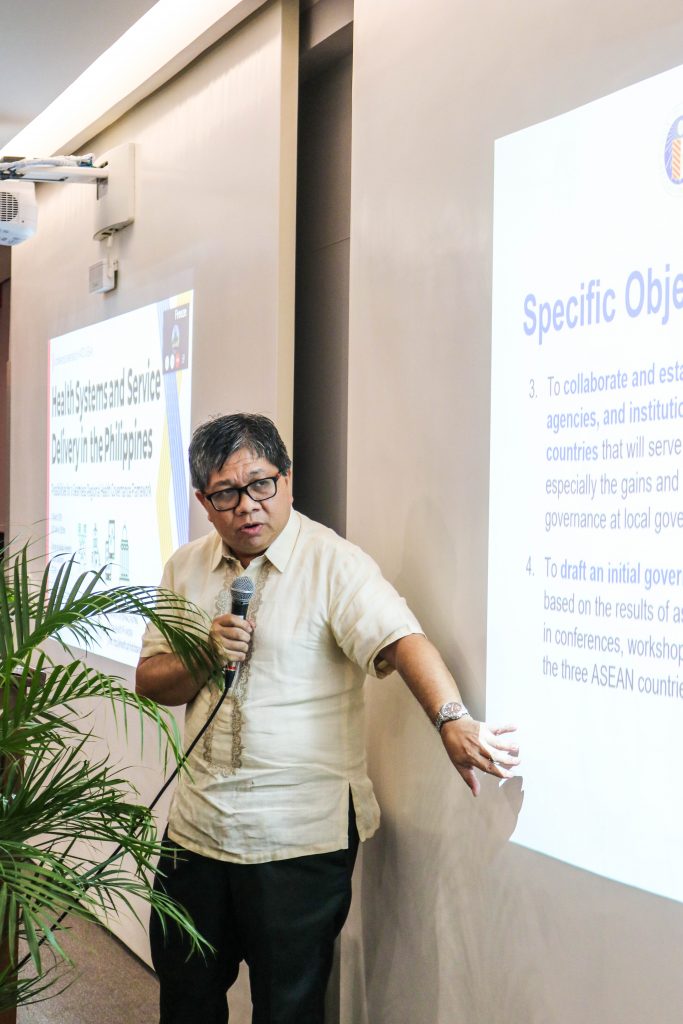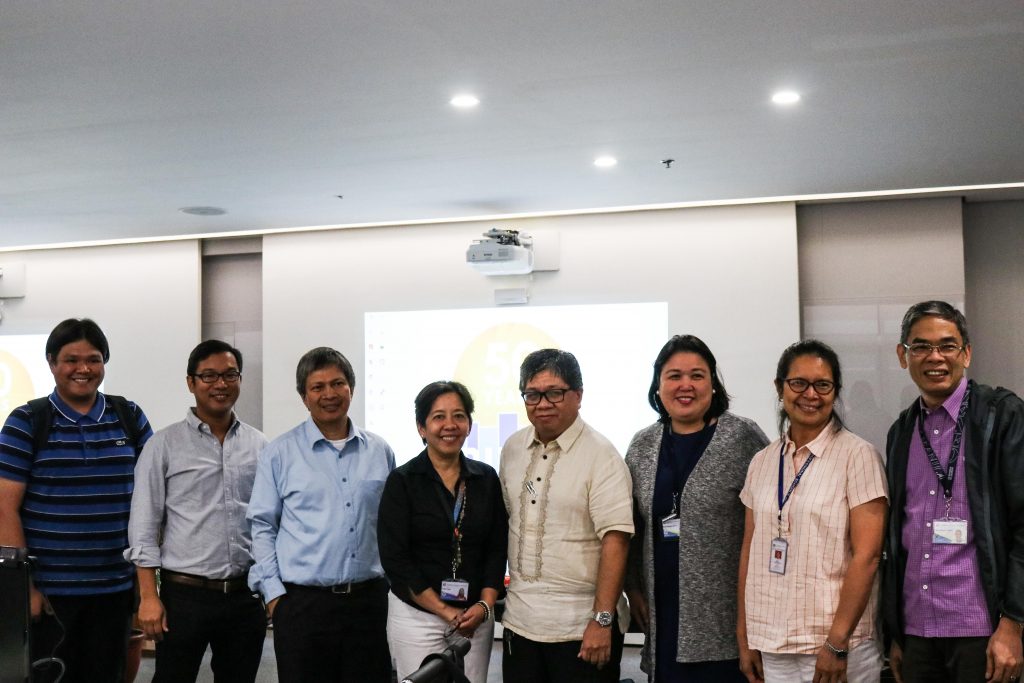HATID ASEAN holds an online discussion on health systems and service delivery in the Philippines

PRESENTATION. Dr. Leslie Lopez presented the initial findings of the HATID ASEAN research project.
QUEZON CITY, Philippines – The Health Technology for Informed Decision-making in the ASEAN Region (HATID ASEAN) project hosted an online discussion on health systems and service delivery in the Philippines last March 12, 2019. Institutional partners from the Philippines, Thailand, and Indonesia participated in the online live streaming discussion. The discussion focused on the initial findings of the Philippine component of the project and the role of ASEAN in health governance among the ASEAN member states (AMS).
The Health Technology for Informed Decision-making in the ASEAN Region (HATID ASEAN) is a joint project between the ASEAN Network for Drugs, Diagnostics, Vaccines and Traditional Medicines Innovation (ASEAN NDI), Department of Science and Technology-Philippine Council for Health Research and Development (DOST-PCHRD), and the Institute of Philippine Culture-Ateneo de Manila University (IPC-AdMU). It is a convergence project to provide an opportunity for three ASEAN countries (the Philippines, Thailand, and Indonesia) to address cross-cutting issues pertaining to program management and service delivery using eHealth technologies.
Dr. Fernando Aldaba (Dean, SoSS-AdMU), Dr. Pramon Viwattanakulvanid (CPHS-CU, Thailand), and Dr. Nunik Kusumawardani (NIHRD-MOD, Indonesia) offered a few words to mark the opening of the program. This was followed by Dr. Dennis Batangan (Research Associate, IPC) who discussed the project’s goals and methodology as well as other associated initiatives of IPC-AdMU namely the eHealth Philippines (eHealthPH) website, the eHealth Training on Unified Resources Online (eTURO), and the massive open online courses (MOOCs) of the COMPETEN-SEA Project.

DISCUSSION. Dr. Dennis Batangan discussed the objectives and the methodology used in the HATID ASEAN research project.
HATID ASEAN Project Director Dr. Leslie Lopez (Research Associate, IPC-AdMU) then presented the project’s initial findings. She noted that while respondents of the study were familiar with electronic medical records (EMRs) and hospital information systems, the Philippine Health Insurance Corporation’s (PhilHealth) Electronic Claims System (eClaims) is the most utilized technology in the study sites. Overall, the implementation of eHealth solutions in the selected sites illustrates the classic combination of possibilities and constraints. Although there are still some problems that need to be addressed, Dr. Lopez shared that there is also an overwhelming appreciation of the cost-efficiency provided by eHealth technology, specifically in terms of accessing and managing health information. Quick access to available health data allows decision-makers to make better-informed decisions on time.
Moreover, the problems mentioned by Dr. Lopez included difficulties of health workers in retooling to get the necessary skills for eHealth technology. Other recurring problems mentioned include poor physical infrastructure and internet connectivity in some areas. Surprisingly, this problem is experienced not only in geographically isolated localities but also areas in and surrounding urban centers. Another issue concerns the added costs involved in the transition to eHealth technology. This financial consideration partly explains the uneven implementation of private and public health care institutions with the private institutions ahead in the game.
While there is a vast potential of eHealth use in the country, Dr. Lopez remarked that the process is slowed down because of the poor policy environment that makes governance challenges. Dr. Lopez also noted that based on interviews policies and directives mostly emanate from national offices. There are no or minimal attempts to come up with policies that are more context-specific to address specific constraints of HCIs on the ground. This may be a possible issue in the future as greater reliance on eHealth technology is expected in light of the recently approved Universal Health Care (UHC) Program. Contradictions and policy gaps need to be addressed right away. It is a crucial step in order to prevent any disruption in the delivery of effective health services across the archipelago.
After the presentation of the findings, representatives from Pangasinan Provincial Health Office, Cabanatuan City Health Office, PhilHealth, Ateneo School of Medicine and Public Health (ASMPH) reacted to Dr. Lopez’ presentation, clarifying, and validating some of the initial findings of the study.

HEALTH NETWORK. Group photo of some of the participants from different health and research institutions in the Philippines.
Dr. Enrique Niño Leviste (Associate Director for Research, IPC) offered a synthesis of discussions highlighting recurring themes such as the importance of convergence, collaboration, and the context in the implementation of technology-based platforms on health. “Working towards inclusive development,” Dr. Leviste reminded, “is not a unilateral affair but a multi-sectoral undertaking. There is a need for the participation of various sectors in order to properly implement eHealth on the ground.” Finally, Dr. Leviste read the closing remarks on behalf of Dr. Jaime Montoya (Executive Director, PCHRD) to close the program.
Written by: Jessica Sandra Claudio & Haraya Marikit Mendoza



